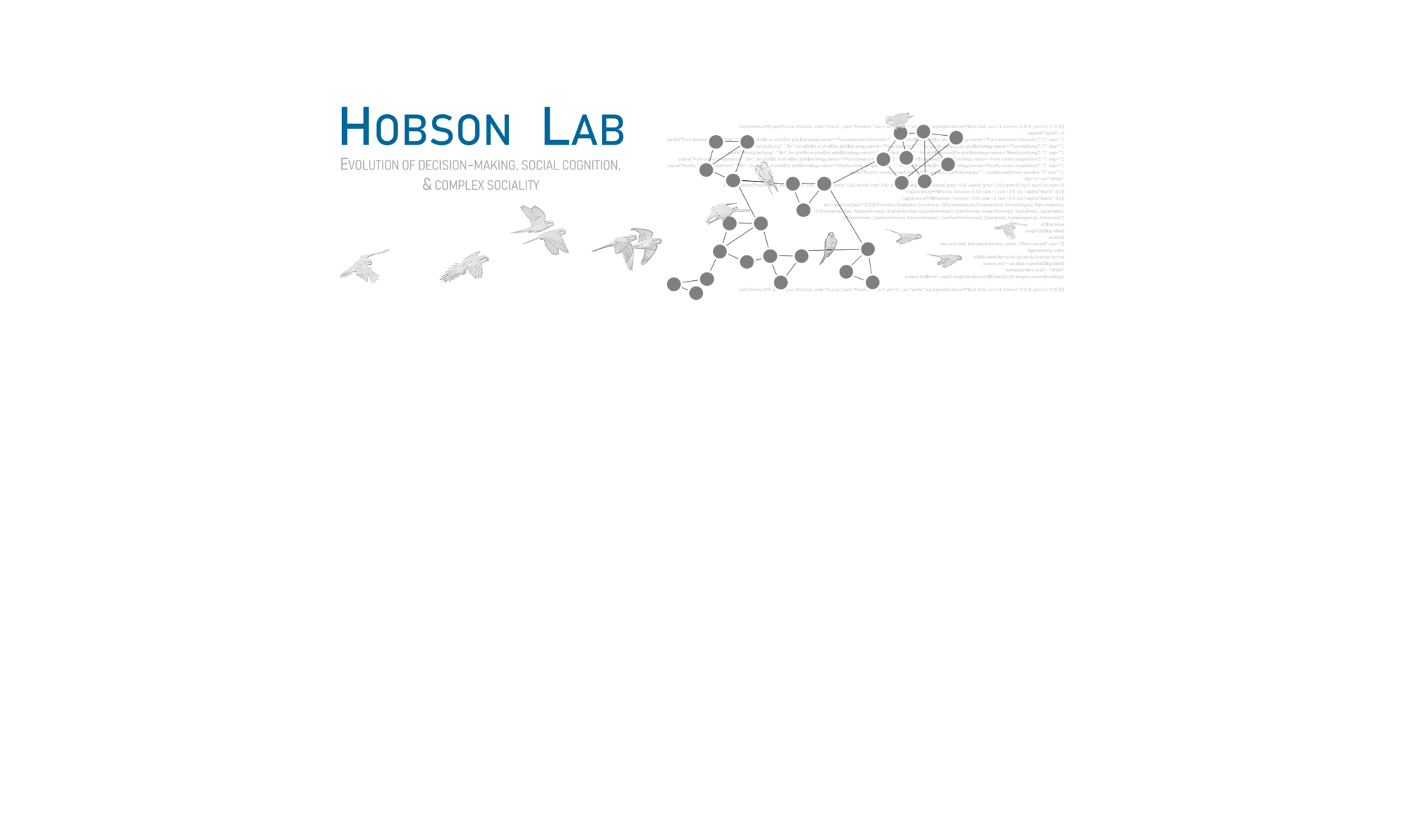My new paper “What are we missing about animal social complexity?” was just released as a preprint on arXiv. It’s also in review at Animal Behaviour as part of a special issue organized by Rafa Rodriguez (U. Wisconsin-Milwaukee) that came out of a symposium he organized called “What Are We Not Asking About The Evolution of Behavior That We Should Be Asking” at this summer’s Animal Behavior Conference. [This paper has since been accepted and published, see details here]
In this paper, I collaborated with three other postdocs here at the Santa Fe Institute to describe ways that we can better connect foundational concepts in complex systems to the study of animal behavior and social complexity. This project combined perspectives and insight from me (behavioral ecology), Vanessa Ferdinand (cultural evolution), Artemy Kolchinsky (complex systems/statistical physics), and Joshua Garland (mathematics/dynamical systems). This mix of fields, perspectives, and backgrounds made this a very challenging paper, but ultimately incredibly rewarding to write.
Abstract: Explaining how and why some species evolved to have more complex social structures than others has been a long-term goal for many researchers in animal behavior because it would provide important insight into the links between evolution and ecology, sociality, and cognition. However, despite long-standing interest, the evolution of social complexity is still poorly understood. This may be due in part to a focus more on the feasibility of quantifying aspects of sociality and less consideration for what features of complexity these measures can detect. Any given approach to studying complexity can tell us some things about animal sociality, but may miss others, so it is critical to decide first how to approach conceptualizing complexity before jumping in to quantifying it. Here, we highlight four fundamental concepts that are commonly used in the field of complex systems: (1) micro and macro scales of organization, (2) compression and coarse-graining, (3) emergent macro-level patterns, and (4) downward causation from macro to micro scales. These are particularly applicable to animal social systems, but are not often explicitly addressed. We summarize these concepts and then show how they can provide a rigorous foundation for conceptualizing social complexity. Using these concepts, we re-examine several existing animal social complexity approaches and show how each relates to these fundamental concepts. Ultimately, researchers need to critically evaluate any measure of animal social complexity in order to balance the biological relevance of the aspect of sociality they are quantifying with the feasibility of obtaining enough data.





